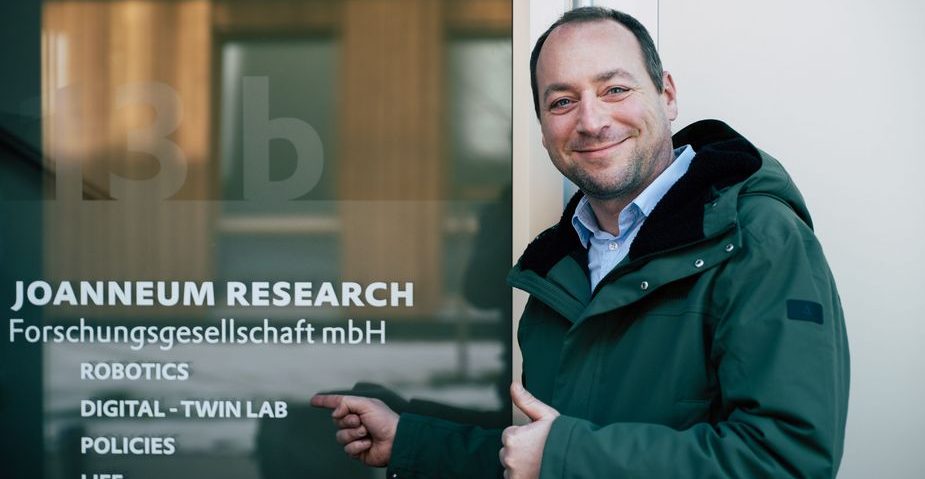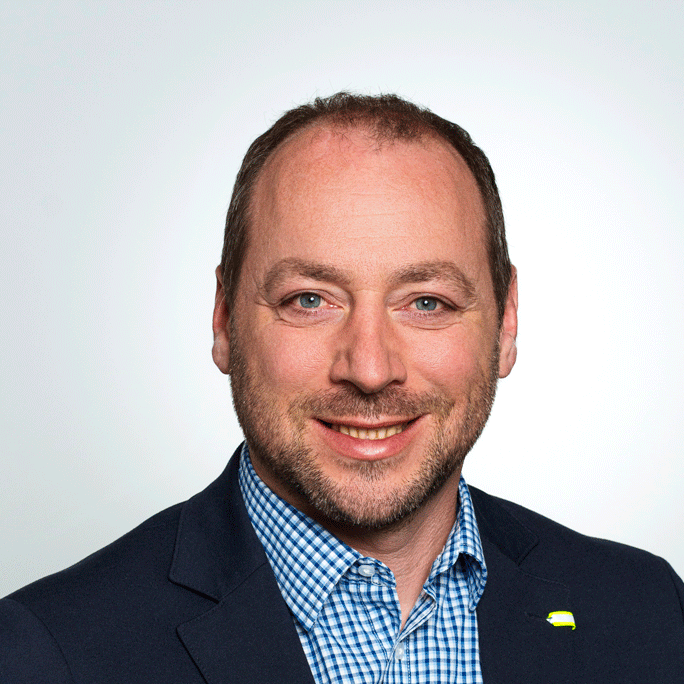Automated driving is not tested immediately on roads or tracks, but primarily in simulations. In this way, millions of test kilometres can be reeled off digitally without starting a vehicle. To ensure that the test kilometres correspond as closely as possible to reality, it is necessary to create a digital image of the real environment, i.e. a digital twin. A single sensor system, e.g. on the roof of a vehicle, can only recognise its surroundings from its specific perspective. This results in blind spots and blind spots. To close these gaps, the DIGITAL experts work with a combination of vehicle-mounted (car-mounted), airborne (drone) and person-mounted (rucksack) mobile mapping methods.
Different measuring devices lead to the big picture
Vehicle-supported mobile mapping systems make it possible to measure road space with millimetre precision: two laser scanners record 3.6 million measuring points per second. 7 cameras and a panoramic camera can capture 114 megapixels. The surveying drone measures environments extremely efficiently from the air. With a dead weight of 11 kg and a load capacity of 7 kg, it can carry a laser scanner, an optical camera and a thermal camera. It can cover 2 km² per flight and only lands to replace the battery.
If digital twins need to be created of areas that cannot be reached or viewed with a vehicle or drone, terrestrial 3D laser scanners are used. For example, a stairwell is precisely measured by the laser scanner taking overlapping images at several points, which are then merged into an overall image in the Digital Twin Lab.
In order to derive digital images of environments that are as complete as possible, different measuring devices are combined to carry out measurements from the air and from the ground, on the road and also in rough terrain. Only seamless digital twins can fulfil the high requirements in the simulation of signal propagation.
Kick-off for Digital Twin Lab
Under the management of Patrick Luley, the set-up phase of the Digital Twin Lab at the Klagenfurt site began at the start of 2023. Initially, 100 m2 of laboratory space and 130 m2 of office space were occupied and research equipment worth 1.3 million euros was transferred from Graz to Klagenfurt. By 2027, a team of 10 employees will be working on site. The construction phase of the site is being financially supported by the state of Carinthia, which holds a stake in JOANNEUM RESEARCH.
The investment was subsidised by the FFG as part of the "R&D infrastructure funding".


